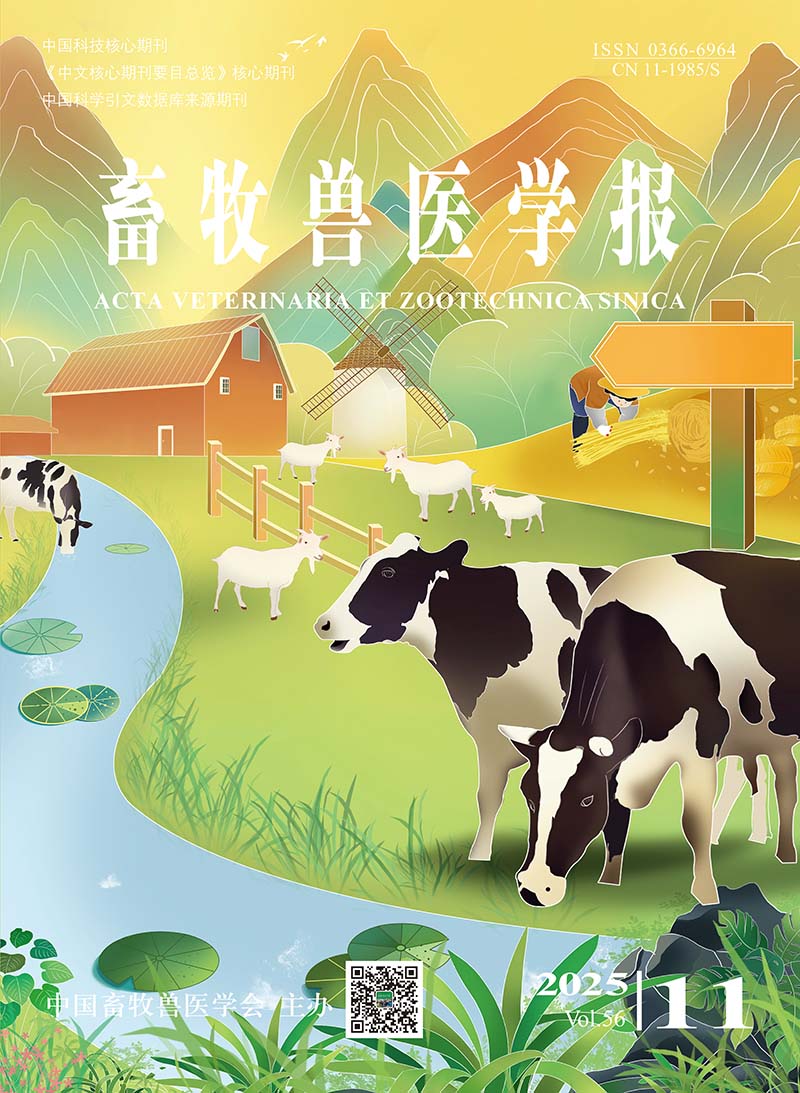-
Regulation of PERK/ATF4/CHOP Pathway on NLRP3 Inflammasome Activation Induced by BCG in THP-1 Cells
- MA Boli, NIE Xueyi, LIU Yueyang, MIAO Shenao, CHEN Tong, YANG Yi, XU Jinrui
-
2022, 53(7):
2268-2281.
doi:10.11843/j.issn.0366-6964.2022.07.023
-
 Abstract
(
292 )
Abstract
(
292 )
 HTML( )
HTML( )
 PDF (5985KB)
(
228
)
PDF (5985KB)
(
228
)
-
References |
Related Articles |
Metrics
Our study aimed at investigating the regulatory role of the PERK/ATF4/CHOP pathway on NLRP3 inflammasome of human monocyte macrophage THP-1 cells infected with Bacillus Calmette-Guérin (BCG). THP-1 macrophages were infected with BCG alone or in the presence of small interference to PERK for 24 h, then the expressions of NLRP3 inflammasome related molecules and PERK/ATF4/CHOP pathway molecules in THP-1 cells were detected at mRNA level by qRT-PCR and protein level by Western blot; THP-1 macrophages were infected with BCG alone or in the presence of specific inhibitors to PERK for 24 h, then the expression of NLRP3 inflammasome related molecules and PERK/ATF4/CHOP pathway molecules in THP-1 cells was detected at mRNA level by qRT-PCR and protein level by Western blot, and ELISA was used to detect the release of interleukin-1β (IL-1β) and interleukin-18(IL-18), the viability of THP-1 cells was detected by CCK-8 method, the co-localization of NLRP3 and ASC was detected by immunofluorescence. The results showed that the expression of PERK, NLRP3, ASC and Caspase-1 proteins increased with the infection time, and reached the peak at 24 h (P<0.001), and the release of IL-1β and IL-18 very significantly increased with time (P<0.001). THP-1 macrophages were infected with BCG alone or in the presence of small interference to PERK for 24 h, compared with uninfected control group, the expression of NLRP3, ASC, Caspase-1, PERK, ATF4, CHOP in siNC+BCG infected group were significantly (P<0.05) or extremely significantly up-regulated (P<0.001) both at mRNA level and protein level, while compared with siNC+BCG infected group, the expression of NLRP3, ASC, Caspase-1, PERK, ATF4, CHOP in siPERK+BCG infected group were significantly (P<0.05) or extremely significantly (P<0.01, P<0.001) down-regulated both at mRNA level and protein level; THP-1 macrophages were infected with BCG alone or in the presence of inhibitor to PERK for 24 h, compared with uninfected control group, the expression of NLRP3, ASC, Caspase-1, PERK, ATF4, CHOP in BCG infected group were significantly (P<0.05) or extremely significantly up-regulated (P<0.01) both at mRNA level and protein level, and the release of IL-1β and IL-18 very significantly increased (P<0.001). Compared with BCG infection group, the expression of those molecules were significantly (P<0.05) or extremely significantly (P<0.01) down-regulated both at mRNA level and protein level, and the release of IL-1β and IL-18 significantly (P<0.05) or extremely significantly (P<0.001) decreased, the viability of THP-1 cells was significantly up-regulated (P<0.05). The results of immunofluorescence also showed that NLRP3 and ASC proteins were co-located, and GSK2656157 could significantly inhibit the expressions of NLRP3 and ASC proteins induced by BCG infection(P<0.001). The above results show that PERK/ATF4/CHOP pathway regulates the activation of NLRP3 inflammasome in macrophages infected by BCG.






